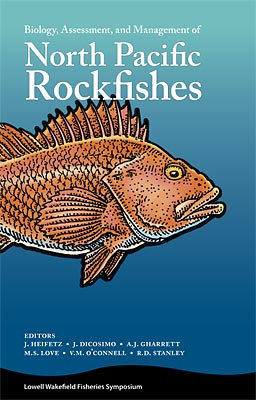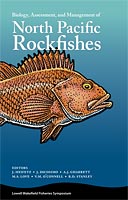
Using radiometric ages to develop conventional ageing methods for shortraker rockfish (Sebastes borealis)
C.E. Hutchinson, C.R. Kastelle, D.K. Kimura, and D.R. Gunderson
- Price: $2.10 Sale: $0.00
 This is part of Biology, Assessment, and Management of North Pacific Rockfishes
This is part of Biology, Assessment, and Management of North Pacific Rockfishes| Format | Price | |
|---|---|---|
| PDF download [352.4 KB] Bypass cart and download |
Free | Add to Cart |
Description
Whole otoliths from a previous radiometric ageing study were thin sectioned using a modified preparation technique. Growth rings on the thin sections were counted using three different ageing strategies with different levels of banding (i.e., grouping fine growth zones). Ages generated from the different ageing strategies were compared with the radiometric ages to select the "best" ageing strategy. A comparison of ageing strategies and radiometric ages suggests that the "best" strategy had a transition age of approximately 20 years below which fine growth zones should be grouped into bands, and above which finer marks should be counted. Otoliths from additional specimens were thin sectioned and aged using this "best" strategy, and also radiometrically aged. Using the "best" ageing strategy, von Bertalanffy growth parameters for female shortraker rockfish were estimated to be (L∞ = 83.2 cm., K = 0.04, and t0 = 4.68 years). These parameters, plus the length at maturity were used to estimate an age range at 50% sexual maturity of between 18 to 28 years which is similar to the probable transition age of 20 years.
Item details
- Item number: AK-SG-07-01n
- Year: 2007
- DOI: https://doi.org/10.4027/bamnpr.2007.14



